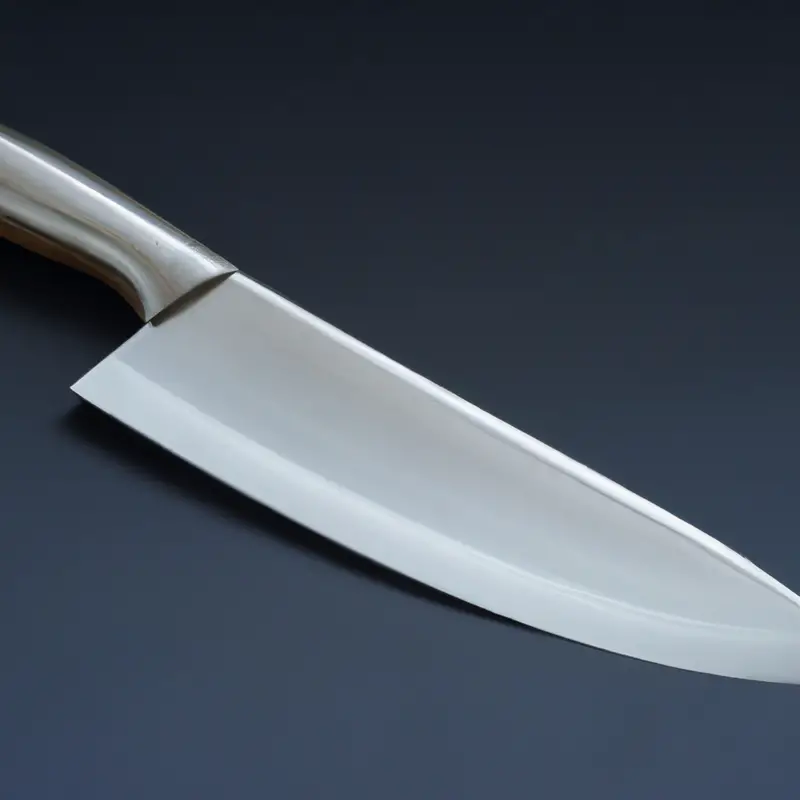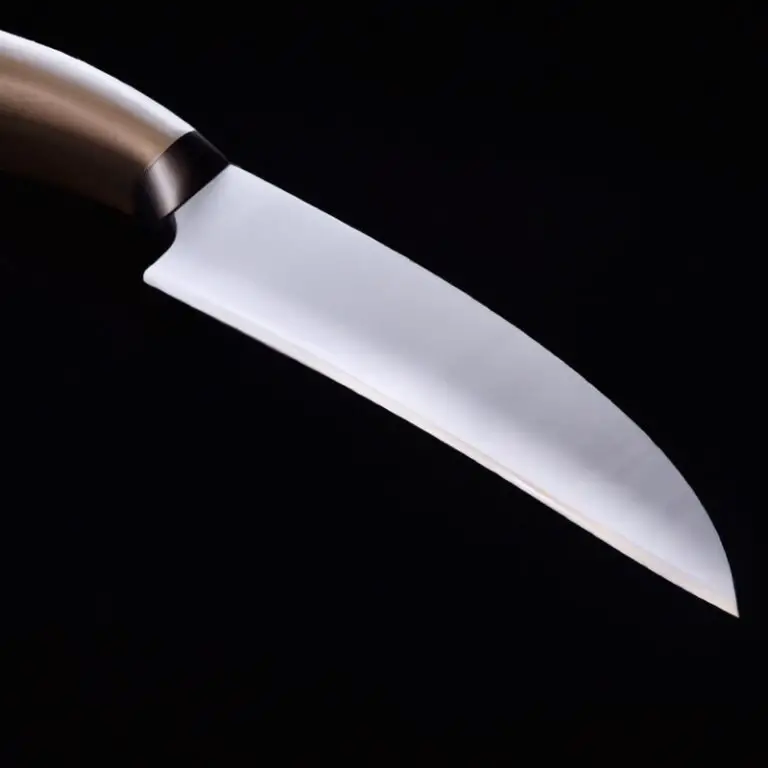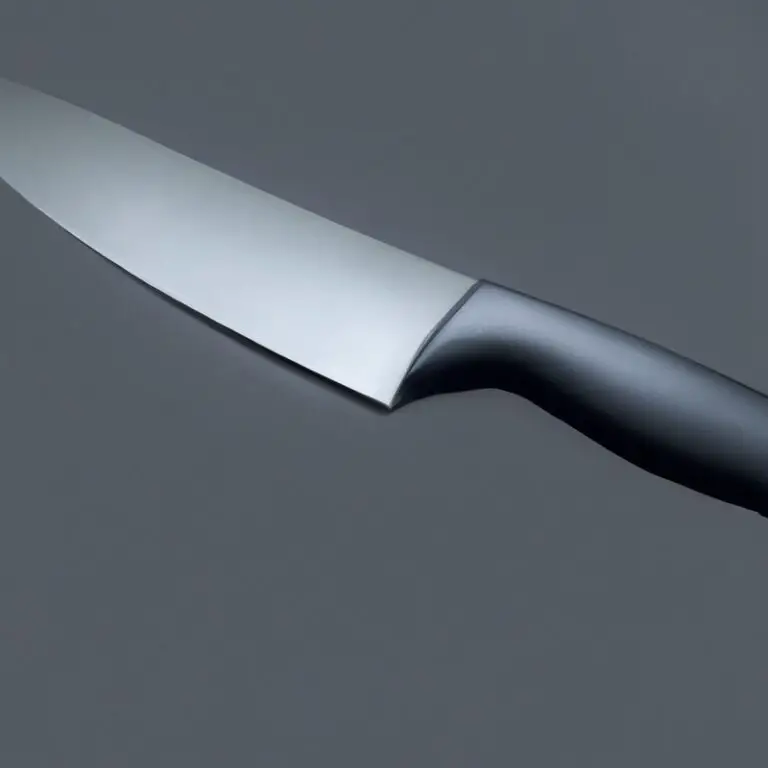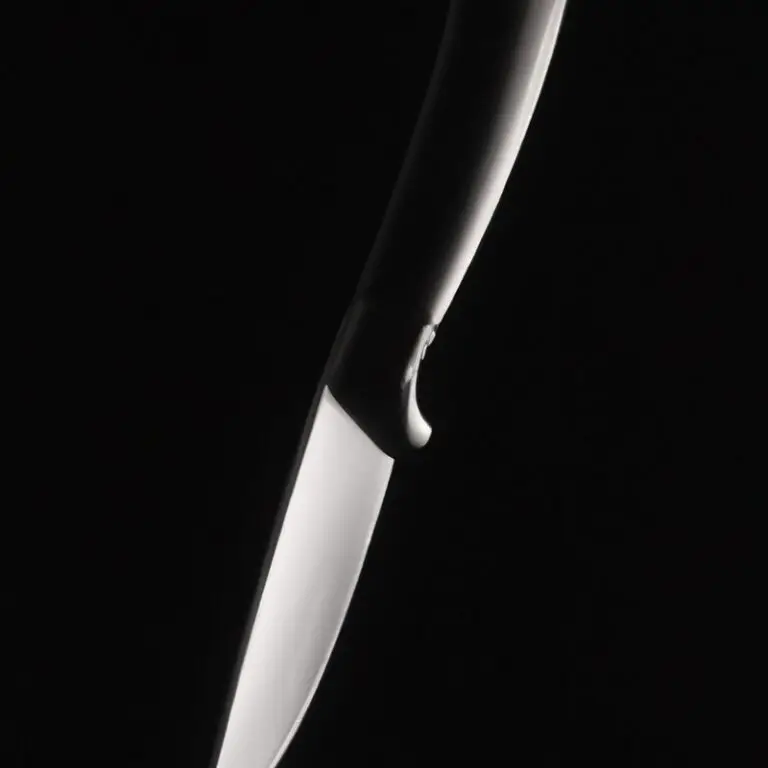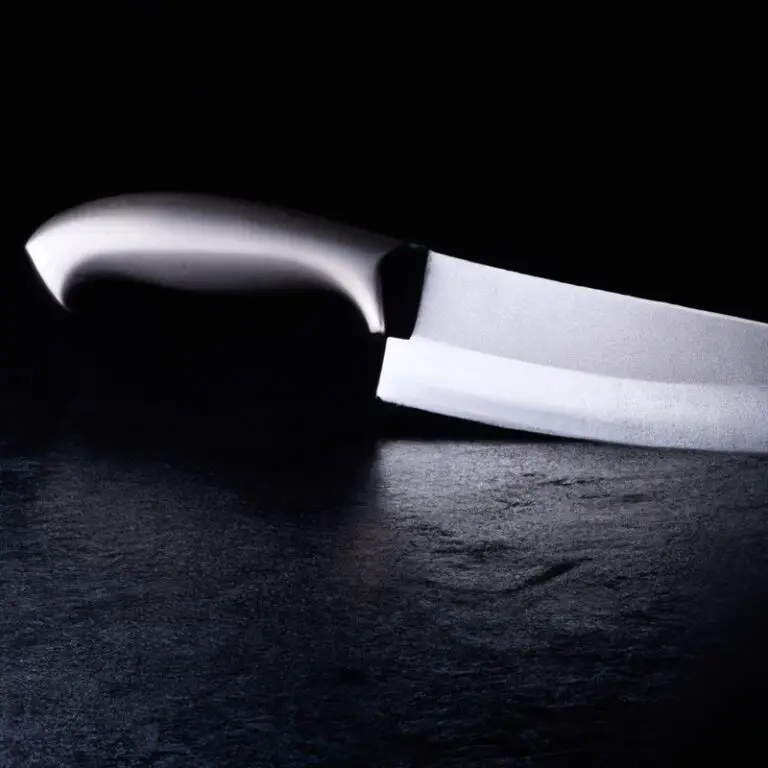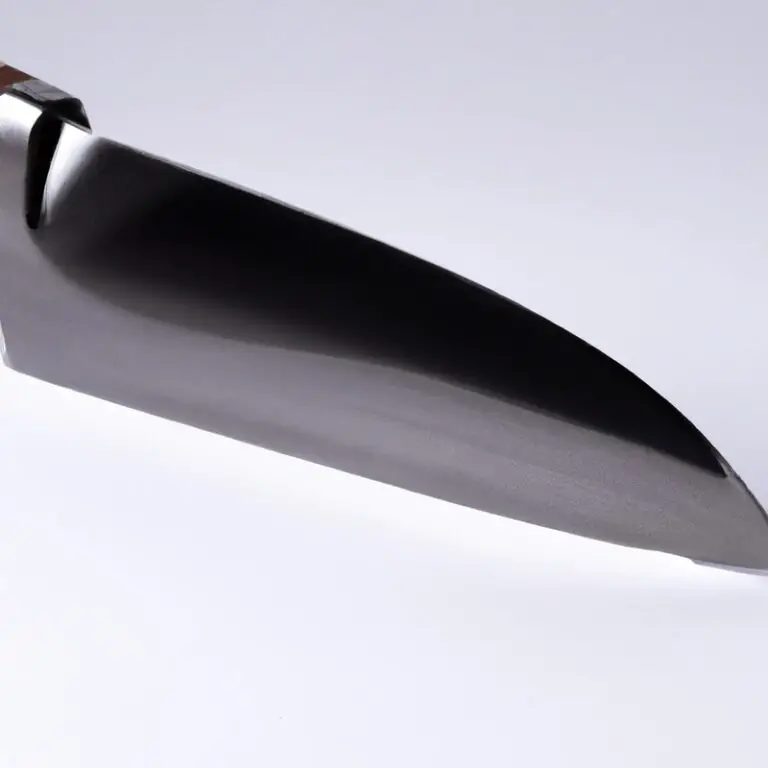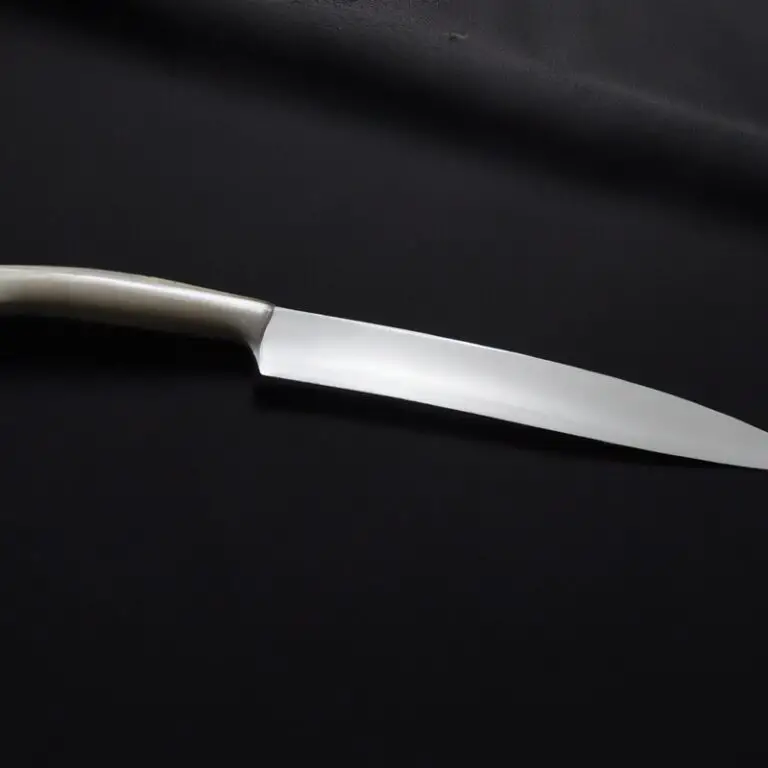How To Prevent Accidents While Using a Santoku Knife? Stay Safe!
Key Takeaways:
- Proper handling techniques, including a firm grip and controlled slicing motions, are crucial for preventing accidents while using a Santoku knife.
- Keeping the blade sharp and honed can reduce the risk of accidents by allowing for more precise cutting and minimizing the need for excessive force.
- An awareness of the knife’s position and movements, as well as the placement of your fingers and other body parts, can help you avoid injuries.
- Regular maintenance, such as hand washing and proper storage, can extend the life of your Santoku knife and ensure safe and efficient use over time.
A world-renowned kitchen knife, the Santoku knife is a versatile culinary tool used for various cutting and slicing techniques. However, with great power comes great responsibility, and accidents can happen in the blink of an eye.
As a professional chef, I have seen my fair share of kitchen accidents, especially when it comes to knives.
In this article, I will guide you through everything you need to know about using a Santoku knife safely, including essential techniques, proper posture, maintenance tips, and more. So, let’s dive in and learn how to keep ourselves safe while using this incredible kitchen tool!
| Preventive Measures | Description |
|---|---|
| Use a cutting board | Always use a cutting board when slicing with a Santoku knife to avoid slipping and make the blade more stable. |
| Keep the knife dry | A Santoku knife should always be kept dry to prevent it from slipping and resulting in an accident. |
| Sharpen the blade regularly | A sharp blade is always easier to control, and reduces the chances of slipping or accidentally cutting yourself. |
| Hold the handle firmly | Ensure that your hand is holding the handle of the Santoku knife firmly to prevent it from slipping out of your hand. |
| Wear protective gloves | Wearing protective gloves can reduce the chance of accidents if the blade slips or if you accidentally touch the blade. |
Understanding the Santoku Knife: Features and Uses
The Santoku Knife is a versatile Japanese kitchen knife often used for cutting meat, fish, and vegetables. It has a straight blade with a length ranging from 5 to 7 inches and a wide blade for easy scooping.
Its biggest advantage is its flat edge and the unique shape that allows it to be used for efficient slicing, dicing and chopping.
Santoku knives come in various materials such as high carbon stainless steel, ceramic and Damascus steel. High carbon stainless steel and ceramic blades are resistant to rust, while Damascus steel is a combination of several different steels, which makes the blade strong, sharp, and durable.
When choosing a Santoku knife, consider the size, shape, and material that suits your needs.
Generally, a 7-inch blade is suitable for most kitchen tasks. Look for a handle that feels comfortable in your hand, is not too heavy and provides a good grip.
The Santoku knife is a versatile tool that can handle most kitchen tasks efficiently.
Remember to use the correct cutting techniques and maintain a safe workspace.
Choosing the Right Santoku Knife: Blade Size, Shape, and Material
Choosing the right Santoku knife is vital for safe and efficient cutting. When selecting a Santoku knife, consider the blade size, shape, and material.
Blade size is a matter of personal preference and the type of food you will be cutting.
A typical Santoku knife blade is between 5 and 7 inches long. If you will be cutting larger items, such as a large roast, consider a longer blade size.
The shape of the blade can also impact your cutting style.
Some Santoku knives have a curved blade that allows for a “rocking” motion when cutting, while others have a straighter blade for a more precise cut. Consider the types of foods you will be cutting and your preferred cutting style when choosing the blade shape.
Santoku knives are often made from high-quality stainless steel or carbon steel.
Stainless steel is durable, easy to clean, and resistant to rust and corrosion. Carbon steel is known for its sharpness and ability to hold an edge.
However, it requires more maintenance and is more prone to rust.
When choosing the material of your Santoku knife, consider the level of maintenance you are willing to commit to and your budget. High-quality materials will cost more but will last longer and provide better performance.
Overall, taking the time to choose the right Santoku knife for your needs will ensure a safer and more enjoyable cutting experience.
Preparing Your Workspace: Cleaning and Organizing Your Cutting Area
Before using a Santoku knife, it is crucial to prepare your workspace by cleaning and organizing your cutting area. A cluttered and dirty workspace can increase the risk of accidents when using a sharp knife.
Here are some tips for cleaning and organizing your cutting area:
- Start by clearing your workspace of any unnecessary items that may obstruct your cutting motion or cause accidents.
- Ensure that your cutting board is clean and dry before placing it on a stable and non-slip surface. Avoid using glass or marble cutting boards, as they may dull your knife’s edge and cause it to slip.
- Keep your knife and cutting board separate from other utensils to prevent cross-contamination.
- Use a damp cloth to clean your knife’s blade before and after use. Never soak your knife in water or put it in the dishwasher, as it can damage the blade and handle.
- Use a knife block or magnetic strip to store your knife safely when not in use, away from the reach of children or pets.
By following these simple cleaning and organizing tips, you can create a safe and efficient workspace for using your Santoku knife.
Maintaining Safe Body Posture: Correct Positions While Holding and Cutting with a Santoku Knife
Maintaining proper body posture while holding and cutting with a Santoku knife is critical for preventing accidents in the kitchen. It is essential to stand comfortably with feet shoulder-width apart, keeping your back straight and shoulders relaxed while cutting.
Avoid leaning forward or slouching, which can cause strain on your back and neck muscles.
Additionally, position your cutting board at a height that allows you to maintain a comfortable working posture. When holding the Santoku knife, grip the handle firmly but without tensing up your hand or wrist.
A relaxed grip provides more control over the blade while keeping your hand and wrist in a neutral position.
Avoid gripping the knife too tightly, as this makes it challenging to control the blade and can cause discomfort in your hand and wrist. Moreover, when cutting with the Santoku knife, place your non-dominant hand on top of the food, keeping your fingers curled inward, away from the blade’s path.
This position provides a stable base for the food and protects your fingers from accidental cuts.
Use a gentle sawing motion with the knife to cut through the food, and avoid applying too much force, which makes it challenging to control the blade. In summary, maintaining proper body posture while holding and cutting with a Santoku knife is vital for safety in the kitchen.
Keep your back straight, shoulders relaxed, and feet shoulder-width apart when cutting with the knife.
A relaxed grip and a stable base for the food are crucial while holding the Santoku knife. Following these guidelines will help you prevent accidents and ensure safe and efficient food preparation.
Proper Hand Placement: Tips for Holding and Gripping the Santoku Knife Handle
When it comes to holding and gripping a Santoku knife handle, there are a few essential tips to keep in mind for optimal safety and efficiency:
- Place your index finger and thumb on opposite sides of the blade’s base for increased control.
- Curl your remaining fingers around the handle to create a secure grip.
- Keep your wrist straight and aligned to your forearm to avoid strain and fatigue.
- Avoid holding the knife too tightly, as it can reduce precision and lead to accidents.
It’s also important to choose a Santoku knife with a comfortable handle that fits your hand size and provides a non-slip grip. With proper hand placement and grip, you can reduce the risk of cuts and enhance your cutting skills.
Essential Cutting Techniques: How to Master Various Cutting Styles for Safe Operations
Mastering essential cutting techniques is crucial to ensure safe Santoku knife usage. Here are some cutting techniques to help reduce injury risks while using a Santoku knife:
- Rock Chop: Firstly, grip your knife handle firmly, let the blade rock forward while holding a steady motion by moving the handle in a slightly curved motion downwards through the ingredient.
- Draw Cut: Angle your knife and pull it back and forth while applying a steady downward force.
- Slice Cut: While holding the Santoku knife handle, position the blade directly in contact with the ingredient at the edge closest to you, placing minimal pressure, then slice the blade by moving your knife forward.
- Tip Chop: Use your knife’s tip as a pivot point while keeping the Santoku knife’s handle raised, then chop downwards to complete the cut.
- Push Cut: Keep the Santoku knife blade perpendicular to the ingredient, then use a continuous motion, push the knife forward, and then pull back using minimum pressure.
Remember to maintain a stable grip on the knife handle while performing these cutting techniques and ensure your workspace is organized to prevent mishaps.
Avoiding Common Safety Risks: Tips for Cutting Foods Without Injuries
To ensure safety while cutting with a Santoku knife, here are some tips to avoid common injuries:
- Always use a sharp knife as it requires less force and reduces the chances of slipping.
- Keep your cutting area clean and dry and avoid cutting near the edge of a surface.
- Hold the handle of the knife firmly with your dominant hand and place the other hand on top of the blade for stability.
- Cut in a controlled and slow manner. Do not rush or make erratic movements.
- Use proper techniques, such as the “claw grip,” for holding and cutting food.
- Avoid cutting small and unevenly shaped food items. Instead, use a mandolin or food processor.
- Don’t use the knife to open cans or packages. It’s not designed for that.
- If you drop the knife, step back and let it fall. Do not try to catch it.
- Store the Santoku knife in a knife block or sheath to prevent damage or injury.
- Keep the knife out of reach of children.
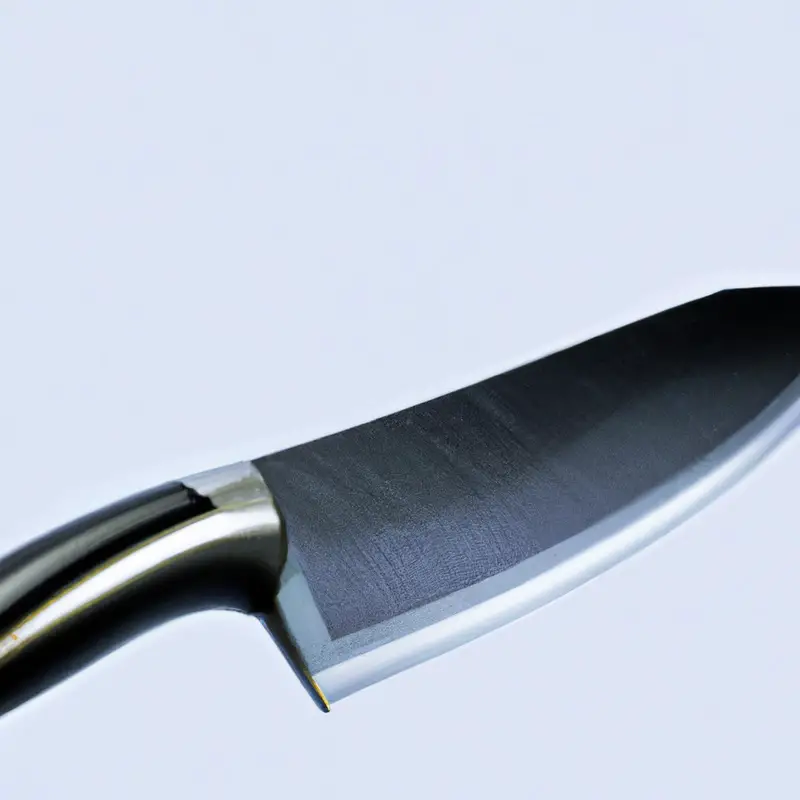
Storing and Maintaining Your Santoku Knife for Longevity and Optimal Safety
Storing and maintaining your Santoku knife properly is crucial for its longevity and optimal safety. Here are some tips for safe storage and maintenance:
- Store your knife in a sheath or a knife block to protect the blade from damage and prevent accidental cuts.
- Avoid storing your Santoku knife with other utensils or cutlery to prevent scratches on the blade.
- Clean and dry your knife thoroughly after each use to prevent rust and corrosion.
- Never leave your knife in water or a damp environment for extended periods.
- Sharpen your knife when necessary and use a honing steel regularly to maintain its sharpness.
- Avoid using abrasive cleaners or scouring pads that can damage the blade’s surface.
- Regularly inspect your knife for any signs of damage or wear, such as nicks or cracks, and replace it if necessary.
By following these simple guidelines, you can ensure that your Santoku knife remains in excellent condition for years to come while keeping you safe from cuts and other accidents.
Tips for Sharpening Your Santoku Knife: How to Keep Your Blade Razor-Sharp
To keep your Santoku knife razor-sharp and prevent accidents, here are some tips to follow:
- Use a sharpening stone or honing rod to sharpen the blade at a 15-20 degree angle.
- Make sure the blade stays wet while you’re sharpening it.
- Start with the coarse side of the sharpening stone and move to the fine side for a sharper edge.
- Run the honing rod over the blade before every use to keep it straight and sharp.
- Avoid using a serrated knife sharpener or electric sharpener as it can damage the blade.
- Don’t use a glass cutting board to prevent the blade from dulling quickly.
- Store your Santoku knife in a wooden block or a secure knife sheath to protect the blade and yourself.
By following these tips, you can keep your Santoku knife sharp, prolong its lifespan, and avoid any accidents while using it.
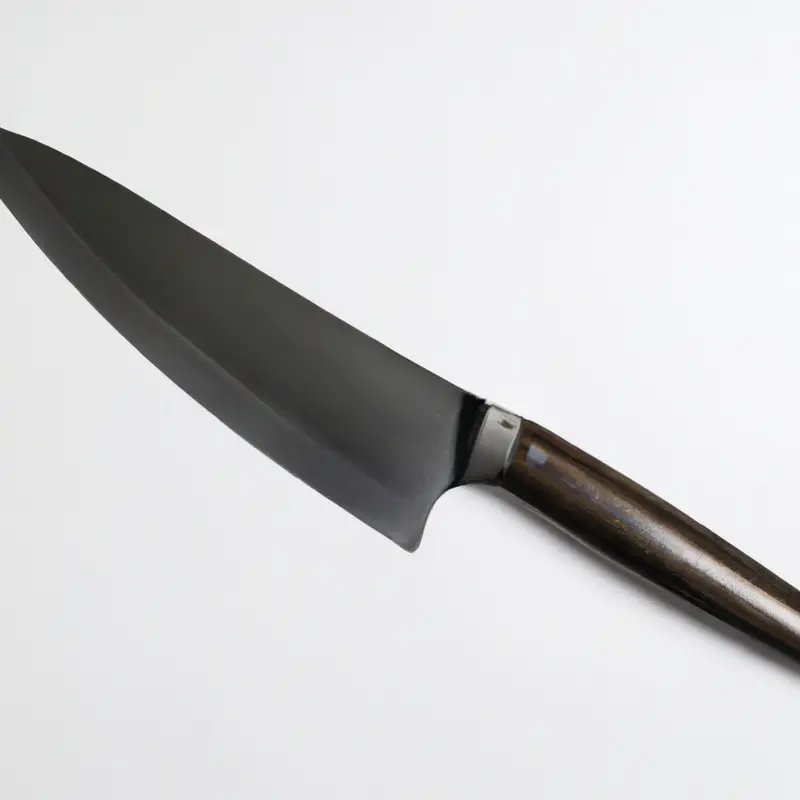
Best Practices For Safe Cleaning & Storage Tips
To maintain the performance and safety of your Santoku knife, proper cleaning and storage are crucial steps. Here are some best practices to follow:
- Always clean your knife after use using a soft sponge or cloth and mild soap.
- Never soak your knife in water, as it can damage the handle and blade.
- Dry the knife thoroughly after cleaning and before storage to prevent rusting.
- Store your knife in a knife block, sheath, or magnetic holder to protect the blade and prevent injuries.
- Keep your knife away from children and pets.
By following these best practices for safe cleaning and storage, you can ensure the longevity and safety of your Santoku knife.
Final Verdict
The Santoku knife is a versatile kitchen tool that can help you quickly and easily prepare meals. However, it’s important to use it safely to avoid accidents.
By choosing the right blade size, maintaining safe body posture, and mastering essential cutting techniques, you can prevent injuries and make the most of your Santoku knife.
Always keep your workspace clean and organized, and store and maintain your knife properly to ensure longevity and optimal safety. By following these best practices, you can confidently use your Santoku knife to prepare delicious meals for years to come.
Remember, with proper care and handling, your Santoku knife can be a reliable kitchen companion for a lifetime.

